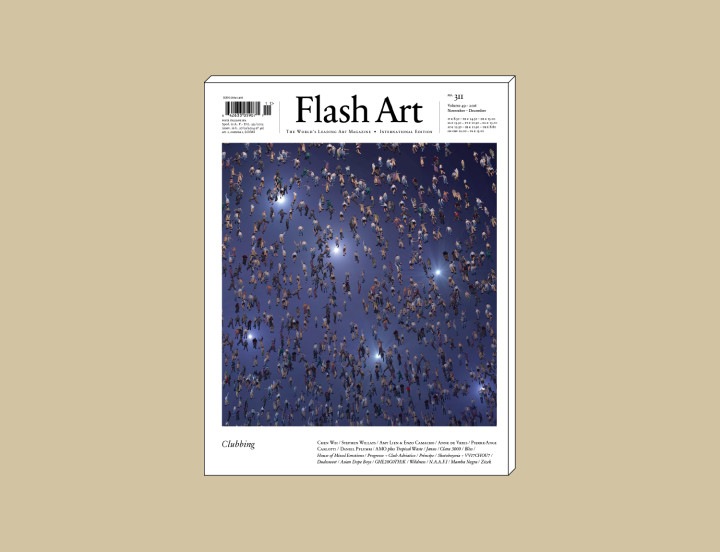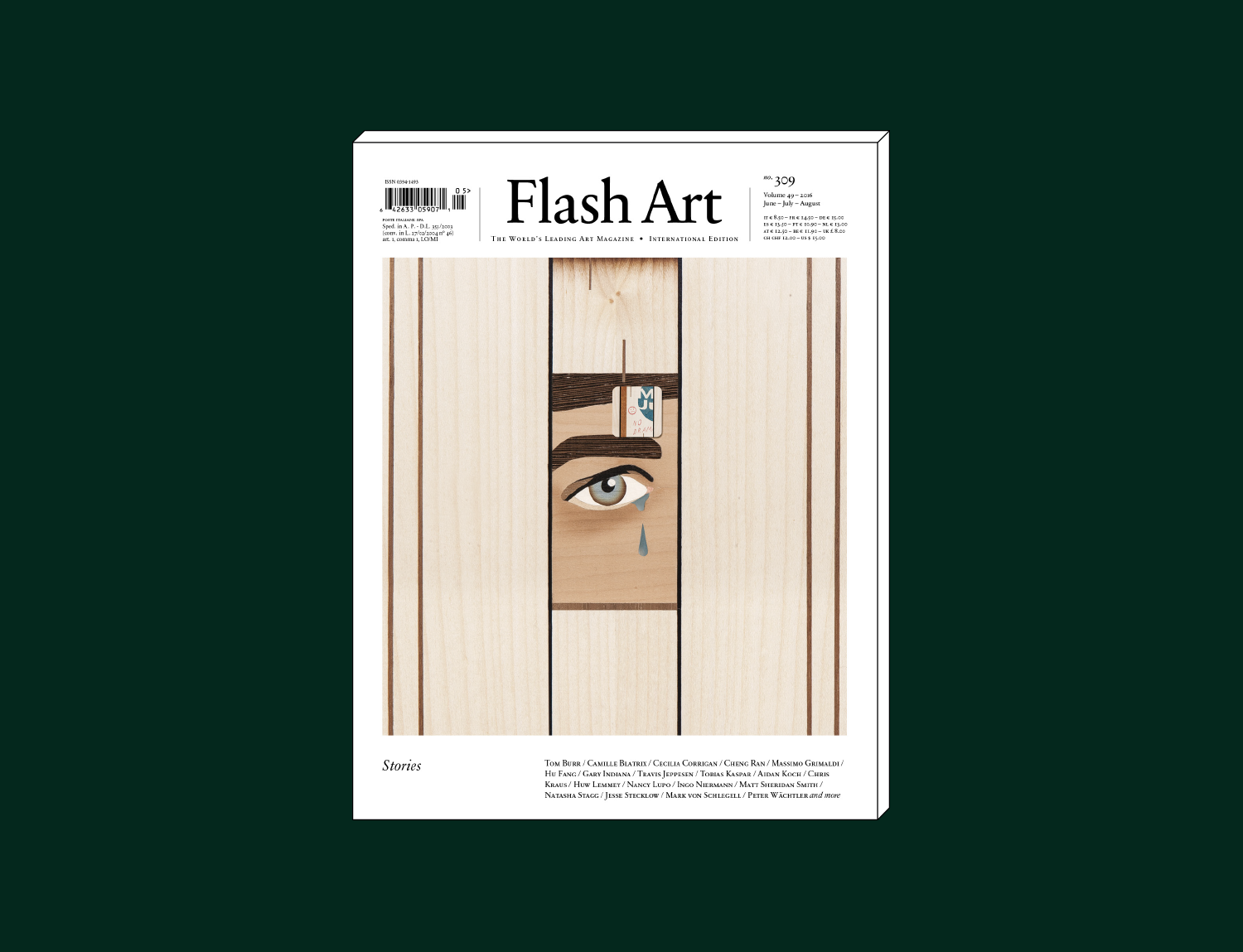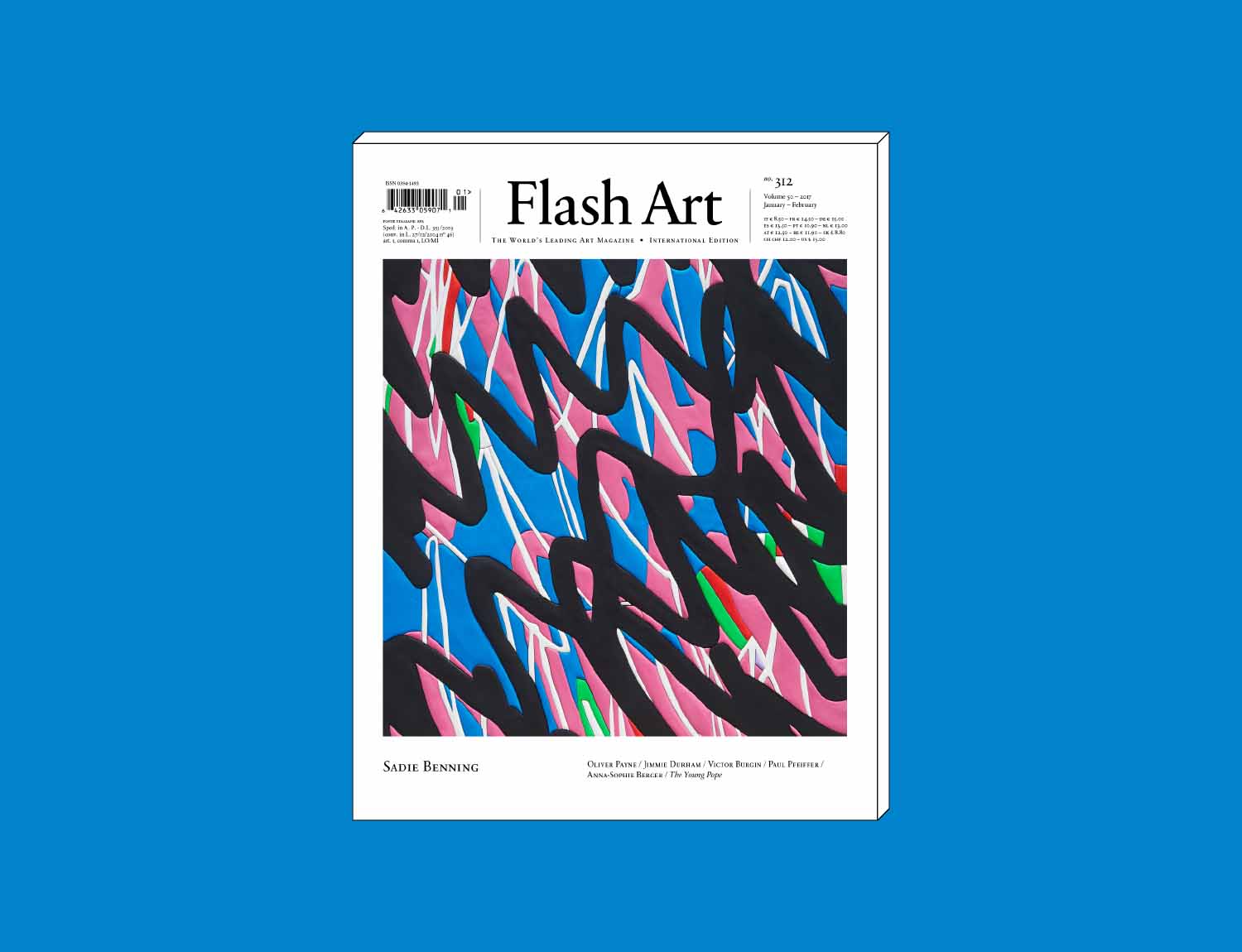We are pleased to announce that the November – December issue of Flash Art International is out now. This issue explores the interfaces between clubs, clubbing culture and creative communities.
The issue is built on two mirroring trajectories. The first addresses club nights, which since the early 2000s have served as backdrops for some of the world’s most vibrant urban scenes: Asian Dope Boys in Beijing and Shanghai (by Milia Xin Bi); Bliss in Vienna (by Natalie Brunner); Clara 3000 in Paris (by Daniele Balice); Dudesweet in Bangkok (by Onsiri Pravattiyagul); GHE20G0TH1K in New York (by Alex Frank); House of Mixed Emotions in Zurich (by Daniel Horn); Janus in Berlin (by Tess Edmonson); Mamba Negra in São Paulo (by Vinicius Duarte and Germano Dushá); N.A.A.F.I in Mexico City (by José Esparza Chong Cuy); Príncipe in Lisbon (by Margarida Mendes); Progresso in Milan and Club Adriatico in Ravenna (by Michele D’Aurizio); Skotoboynia and VV17CHOU7 in Moscow (by Felix Sandalov); Tropical Waste in London (by Steph Kretowicz); and Wildness in Los Angeles (by John Tain). A nexus for new understandings of the collective, these parties are signifiers not only for new sonic endeavors, but also for new dance-floor configurations, new dance moves, even new personifications of the “clubber.”
Our second trajectory examines artists who have considered clubbing culture through their own practices. Pierre-Ange Carlotti, Chen Wei, Anne de Vries, Amy Lien & Enzo Camacho, Daniel Pflumm and Stephen Willats have been invited to share how they process and interpret the social ritual of clubbing.
For the issue’s “Data” we have linked up with the research studio AMO. Ippolito Pestellini Laparelli introduces a special project that digs into the status of contemporary nightlife and its spatial implications. In line with these questions, for the issue’s “Macro,” Martti Kalliala invites us to consider clubs as built spaces with layered temporalities, designed not as ephemeral interiors but rather reconciling the incommensurate timescales of a building that might last several centuries and an individual club with a limited lifespan.
While the 1990s are still regarded as the era of high clubbing, this issue affirms the many social and cultural innovations that clubs have nurtured for millennials, reminding each of us to never stop dancing.
In Reviews: Ryan Gander at Lisson Gallery, New York; Kyle Thurman at Off Vendome, New York; Kelley Walker at the Contemporary Art Museum, Saint Louis; Ry Rocklen at Honor Fraser, Los Angeles; Xanti Schawinsky at Karma International, Los Angeles; Akram Zaatari at Galpão VB, São Paulo; Olivier Foulon at Kunstraum; Olivia Plender at Maureen Paley, London; Mohamed Bourouissa at the Stedelijk Museum, Amsterdam; Decor at the Boghossian Foundation, Brussels; Joachim Bandau at Galerie Thomas Fischer, Berlin; Dena Yago at Sandy Brown, Berlin; Gülsün Karamustafa at Galerie Krinzinger, Vienna; Adrift on Plastic Island at Galerie Bernhard, Zurich; Valerie Keane at High Art, Paris; Dominique Gonzalez-Foerster at the MAAT, Lisbon; Sadie Benning at Kaufmann Repetto, Milan; Mediations Biennale, Poznań; Human Commonalities at the Vadim Sidur Museum, Moscow; Hu Yun at Aike–Dellarco, Shanghai; Danh Vō at White Cube, Hong Kong.





